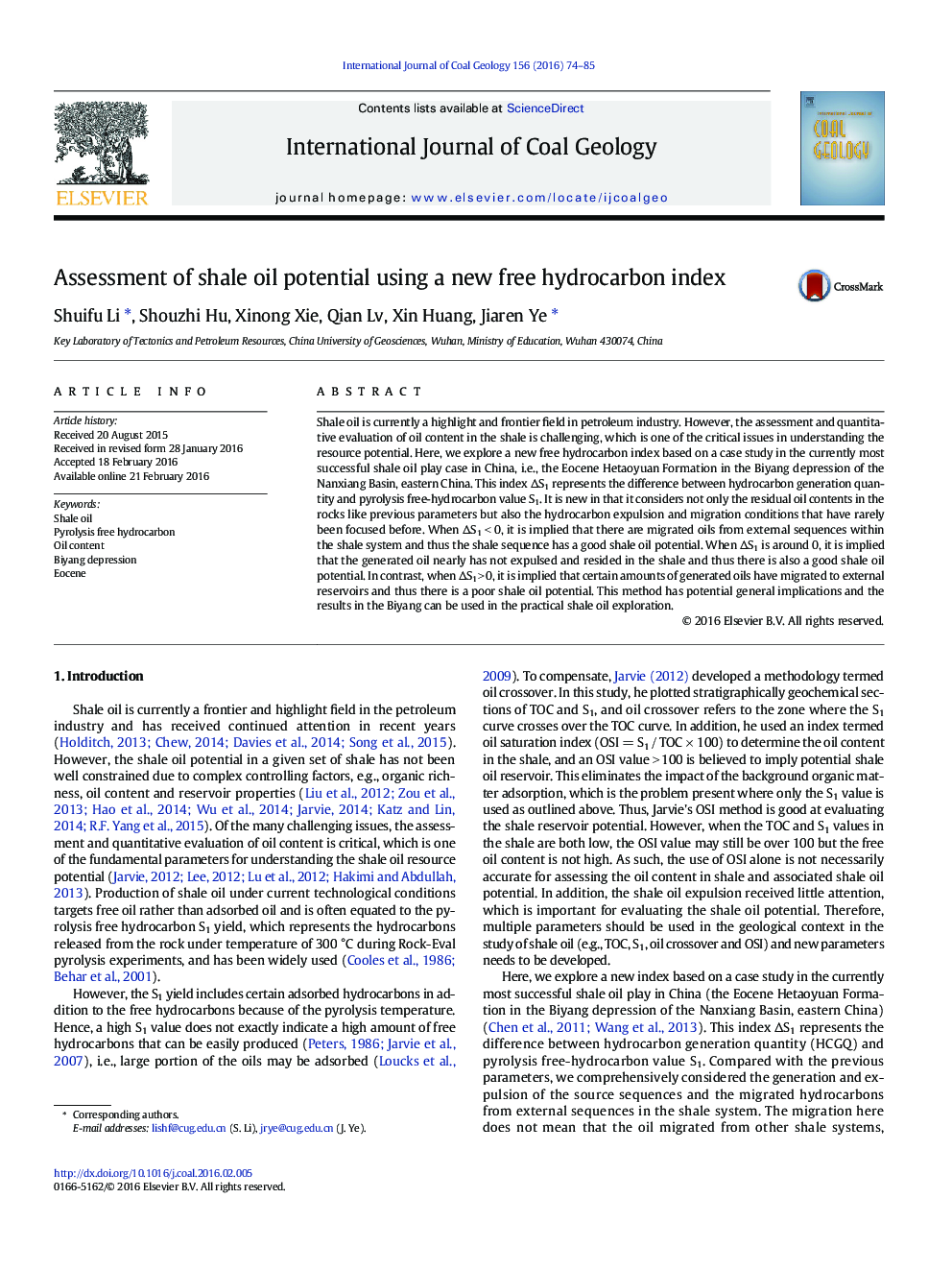| Article ID | Journal | Published Year | Pages | File Type |
|---|---|---|---|---|
| 1752847 | International Journal of Coal Geology | 2016 | 12 Pages |
•A new free hydrocarbon index was proposed to evaluate shale oil potential.•Three type intervals in the shale can be divided according to the new index.•Shale oil potential for each interval can be assessed by the value of new index.•New index is effective on the evaluation of shale oil potential in Biyang depression.
Shale oil is currently a highlight and frontier field in petroleum industry. However, the assessment and quantitative evaluation of oil content in the shale is challenging, which is one of the critical issues in understanding the resource potential. Here, we explore a new free hydrocarbon index based on a case study in the currently most successful shale oil play case in China, i.e., the Eocene Hetaoyuan Formation in the Biyang depression of the Nanxiang Basin, eastern China. This index ΔS1 represents the difference between hydrocarbon generation quantity and pyrolysis free-hydrocarbon value S1. It is new in that it considers not only the residual oil contents in the rocks like previous parameters but also the hydrocarbon expulsion and migration conditions that have rarely been focused before. When ΔS1 < 0, it is implied that there are migrated oils from external sequences within the shale system and thus the shale sequence has a good shale oil potential. When ΔS1 is around 0, it is implied that the generated oil nearly has not expulsed and resided in the shale and thus there is also a good shale oil potential. In contrast, when ΔS1 > 0, it is implied that certain amounts of generated oils have migrated to external reservoirs and thus there is a poor shale oil potential. This method has potential general implications and the results in the Biyang can be used in the practical shale oil exploration.
